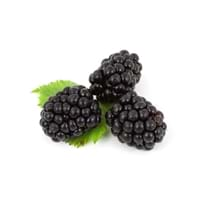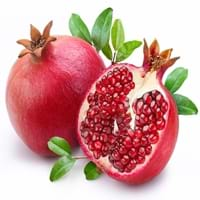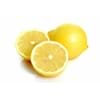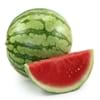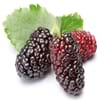Health Benefits
Cancer prevention, Heart care, Increases metabolic rate, Reduces stress, Treatment of dysentary, Treatment of skin Diseases
Cancer prevention, Heart care, Helps in cartilage regeneration, Improves stomach health, Increase in haemoglobin, Increases metabolic rate, Prevents constipation
General Benefits
Digestive aid, Maintains healthy cholesterol level, Strengthens bones
Boosts immune system, Controls blood pressure, Controls blood sugar levels, Digestive aid, Maintains healthy cholesterol level
Skin Benefits
Hydrates skin, Skin rejuvenation, Skin revitalization
Anti-aging benefits, Skin rejuvenation, Treatment of acne
Hair Benefits
Promotes longer and healthier hair
Prevents hair loss, Promotes longer and healthier hair, Treatment of dandruff
Allergy Symptoms
Facial muscle tension, Pressure in sinus, Respiratory congestion, Runny nose, Sneezing, Tingling sensation in wrist and face
Abdominal pains, Anaphylaxis, Itching
Side Effects
Nausea, Vomiting, Might cause change of urine color
Allergic reaction, Cold, Breathing difficulty, Irritation, Swelling
Best Time to Eat
Best if taken as a breakfast (or empty stomach), As a snack in the late afternoon, Don't consume at night and before bed, Eat the fresh ones, avoid mixing with any other foods, don't eat after meal., Morning time (before lunch)
Best if taken as a breakfast (or empty stomach), As a snack in the late afternoon, Eat the fresh ones, avoid mixing with any other foods, don't eat after meal., Morning time (before lunch)
Vitamin B5 (Pantothenic Acid)
Vitamin C (Ascorbic Acid)
Vitamin K (Phyllochinone)
Calories in Fresh Fruit with Peel
Not Available
Calories in Fresh Fruit without Peel
Not Available
Calories in Frozen Form
Not Available
Calories in Canned Form
Not Available
Calories in Pie
Not Available
Season
Spring, Summer
Autumn
Varieties
Prime Ark, Prime Jim, Illini Hardy, Kiowa, Shawnee, Apache, Arapaho, Chester, Hull, Natchez, Navaho and Triple Crown and Von
Balegal, Crab, Cloud, Francis, Freshman and Granada
Color
Purplish black
Dark red, Light pink-red
Taste
Juicy, Sweet
Juicy, Sweet
Origin
Asia, Europe, North America, South America
India, Iran
Soil Type
Well-drained
Clay, Sand
Climatic Conditions
Dry, Warm to hot climate
Cold, Dry, Hot
Facts about
- There are around 2000 varieties of blackberries throughout the world.
- 80-85 degrees is the ideal temperature for its production.
- Leaves of blackberry tree are used to treat sore throats and mild inflammation of the gums.
- Pomegranate means apple with many seeds.
- It was called as the “apple of Grenada” in early English.
- In Hinduism, this fruit symbolizes prosperity and fertility.
- Pomegranate trees can live upto 200 years.
Top Producer
United States of America
Iran
Other Countries
China, New Zealand, Serbia, South Africa
Africa, India, Middle east, Pakistan
Top Importer
United States of America
Europe
Top Exporter
Mexico
India
Botanical Name
Rubus Fruticosus
Punica granatum
Synonym
Rubus Millspaughii or Rubus Laciniatus
Punica malus
Subkingdom
Tracheobionta
Tracheobionta
Division
Magnoliophyta
Magnoliophyta
Class
Magnoliopsida
Magnoliopsida
Family
Rosaceae
Lythraceae
Species
Rubus fruticosus
P. granatum
Generic Group
Rose
Pomegranate
Difference Between Blackberry and Pomegranate
We might think that Blackberry and Pomegranate are similar with respect to nutritional value and health benefits. But the nutrient content of both fruits is different. Blackberry and Pomegranate Facts such as their taste, shape, color, and size are also distinct. The difference between Blackberry and Pomegranate is explained here.
The amount of calories in 100 gm of fresh Blackberry and Pomegranate with peel is 43.00 kcal and Not Available and the amount of calories without peel is Not Available and 83.00 kcal respectively. Thus, Blackberry and Pomegranate belong to and category.These fruits might or might not differ with respect to their scientific classification. The order of Blackberry and Pomegranate is Rosales and Myrtales respectively. Blackberry belongs to Rosaceae family and Pomegranate belongs to Lythraceae family. Blackberry belongs to Rubus genus of Rubus fruticosus species and Pomegranate belongs to Punica genus of P. granatum species. Beings plants, both fruits belong to Plantae Kingdom.
